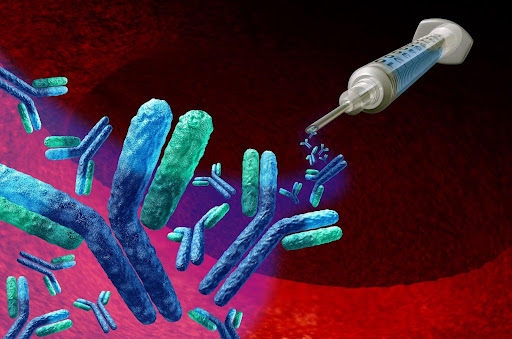Optimizing Your Monoclonal Antibody Production Workflow
Monoclonal antibody production is a multi-step process that involves developing cell lines, optimizing culture conditions, and ensuring stringent quality control to produce consistent batches of high-quality, high-yield monoclonal antibodies. The production of monoclonal antibodies is crucial due to their therapeutic applications across cancer, immunology, and infectious diseases (Fig. 1), as well as in research and diagnostics (Ansar & Ghosh, 2013; Mekala et al., 2024; Siddiqui, 2010). However, scientists frequently face challenges during monoclonal antibody production workflows, including achieving consistent quality and high yield, scaling up production, and adhering to regulatory standards.

Figure 1. Monoclonal antibodies have numerous therapeutic applications spanning oncology, immunology, and infectious diseases.
In this article, we will explore the steps involved in monoclonal antibody production, discuss common challenges, and provide practical strategies for optimizing workflows to enhance efficiency, improve product quality, and facilitate successful scale-up.
Understanding Monoclonal Antibody Production Workflows
Monoclonal Antibody Production Workflow: Step-by-Step
- Cell line developmentThe first stage of the monoclonal antibody production workflow requires the development of a cell line capable of producing the desired antibody (Ryu et al., 2022). This involves selecting a host cell line and transfecting cells with recombinant plasmids encoding the protein of interest. Stable cells producing the protein of interest are selected and expanded in culture to establish monoclonal cell lines before screening for the highest-producing clones. This includes characterizing cells in terms of protein expression, viability, growth rate, stability, and product quality.
- Upstream cell cultureNext, the selected clones are grown in high volumes, for example, in a bioreactor. Cell growth and antibody production are monitored, and variables such as medium composition, temperature, pH, and nutrient concentrations are optimized to achieve maximal antibody yield and quality (Li et al., 2010).
- Antibody productionOnce conditions have been optimized, cells are grown under optimal conditions, and antibody production is continuously monitored.
- Harvesting and purificationOnce the desired antibody concentration has been reached, the culture medium is harvested, and cellular debris, contaminants, and impurities are removed by centrifugation, filtration, and purification by chromatography and further filtration (Liu et al., 2010). The purified antibody can then be formulated into the correct dosage for administration.
- Quality controlRigorous quality control procedures are carried out throughout the process, from cell line development to final product formulation, to ensure the antibody is high-quality and consistent between batches.
Common Challenges in Monoclonal Antibody Production Workflows
Scientists often face hurdles during monoclonal antibody production workflows that can detrimentally impact productivity, efficiency, and antibody yield and quality. Common challenges include:
- Achieving optimal antibody yield.
- Achieving consistent, high-quality batches of antibodies.
- Scaling up production while maintaining quality, consistency, and yield.
Optimizing Your Monoclonal Antibody Production Workflow for Success
Integrating strategies to optimize your monoclonal antibody production workflows can enhance efficiency and productivity while achieving optimal antibody yield and quality. The following section will discuss how small changes to your workflows can be a recipe for success in monoclonal antibody production.
Automation
Advanced automated tools can significantly improve the efficiency and consistency of monoclonal antibody production workflows by minimizing human error, enhancing throughput, and ensuring reproducibility (Holland & Davies, 2020). Automating cell culture, cell line or hybridoma screening, and antibody purification steps allows for precise and rapid processing, reducing contamination risks and variability. Automated systems also enable consistent culture conditions and scalable production, essential for transitioning from small-scale research to large-scale manufacturing.
mated systems also enable consistent culture conditions and scalable production, essential for transitioning from small-scale research to large-scale manufacturing.
Single-cell Dispensing
Single-cell dispensing using tools like CYTENA’s UP.SIGHT can be invaluable for optimizing the cell line development phase of monoclonal antibody production workflows. Single-cell dispensers enable precise isolation of high-yield, genetically stable clones, streamlining the development process and enhancing product quality. The UP.SIGHT offers advanced dual-imaging technology, which results in a >99.99% probability of clonality and helps researchers overcome regulatory hurdles.
Picking Hits
In monoclonal antibody production workflows, picking hits refers to selecting specific hybridoma cells or clones that produce antibodies with suitable characteristics for further development. Optimizing the process of picking hits involves using high-throughput screening (HTS) assays to quickly identify high-quality antibody-producing clones, as well as applying advanced bioinformatic techniques to support hit prioritization (Bauer et al., 2023).
HTS assays can be streamlined by automating processes with liquid handlers and single-cell dispensers integrated with robotic arms (Fig. 2). Moreover, CYTENA’s F.QUANT Titer assay kits support fast and direct antibody titer measurement, enabling reliable identification of high-producing cell lines for high-throughput antibody discovery workflows.

Figure 2. Automation can streamline HTS assays, improving the efficiency and reproducibility of the process of picking hits in monoclonal antibody production workflows.
GMP Readiness
Good Manufacturing Practice (GMP) readiness is essential in monoclonal antibody production workflows to ensure product quality, safety, and regulatory compliance (Covarrubias et al., 2022). It is critical for maintaining batch consistency, preventing contamination, and facilitating the scale-up from research to commercial production. To optimize workflows for GMP, laboratories should implement robust quality control processes, train scientists in GMP protocols, validate all production processes, and maintain GMP-compliant facilities. Automation and digital tools can reduce human error and enhance process control, while robust record-keeping can help overcome regulatory hurdles.
Conclusion and Future Trends
Optimizing monoclonal antibody production workflows is crucial for achieving high-quality, consistent antibody yields. By incorporating advanced automation tools, leveraging single-cell dispensing technologies, refining the hit-picking process, and ensuring GMP readiness, scientists can enhance productivity and reduce workflow variability. As the field continues to advance, these strategies will be vital for meeting the growing demand for monoclonal antibodies in therapeutic, diagnostic, and research applications.
CYTENA’s collection of best-in-class instruments allows researchers to optimize their monoclonal antibody production workflows for success.
References
- Ansar, W., & Ghosh, S. (2013). Monoclonal Antibodies: A Tool in Clinical Research. Indian Journal of Clinical Medicine, 4, IJCM.S11968. https://doi.org/10.4137/IJCM.S11968
- Bauer, J., Rajagopal, N., Gupta, P., Gupta, P., Nixon, A. E., & Kumar, S. (2023). How can we discover developable antibody-based biotherapeutics? Frontiers in Molecular Biosciences, 10, 1221626. https://doi.org/10.3389/fmolb.2023.1221626
- Covarrubias, C. E., Rivera, T. A., Soto, C. A., Deeks, T., & Kalergis, A. M. (2022). Current GMP standards for the production of vaccines and antibodies: An overview. Frontiers in Public Health, 10, 1021905. https://doi.org/10.3389/fpubh.2022.1021905
- Holland, I., & Davies, J. A. (2020). Automation in the Life Science Research Laboratory. Frontiers in Bioengineering and Biotechnology, 8, 571777. https://doi.org/10.3389/fbioe.2020.571777
- Li, F., Vijayasankaran, N., Shen, A. (Yijuan), Kiss, R., & Amanullah, A. (2010). Cell culture processes for monoclonal antibody production. mAbs, 2(5), 466–479. https://doi.org/10.4161/mabs.2.5.12720
- Liu, H. F., Ma, J., Winter, C., & Bayer, R. (2010). Recovery and purification process development for monoclonal antibody production. mAbs, 2(5), 480–499. https://doi.org/10.4161/mabs.2.5.12645
- Mekala, J. R., Nalluri, H. P., Reddy, P. N., S.b., S., N.s., S. K., G.v.s.d., S. K., Dhiman, R., Chamarthy, S., Komaragiri, R. R., Manyam, R. R., & Dirisala, V. R. (2024). Emerging trends and therapeutic applications of monoclonal antibodies. Gene, 925, 148607. https://doi.org/10.1016/j.gene.2024.148607
- Ryu, J., Kim, E.-J., Kim, J.-K., Park, T. H., Kim, B.-G., & Jeong, H.-J. (2022). Development of a CHO cell line for stable production of recombinant antibodies against human MMP9. BMC Biotechnology, 22(1), 8. https://doi.org/10.1186/s12896-022-00738-6
- Siddiqui, M. Z. (2010). Monoclonal Antibodies as Diagnostics; an Appraisal. Indian Journal of Pharmaceutical Sciences, 72(1), 12. https://doi.org/10.4103/0250-474X.62229




